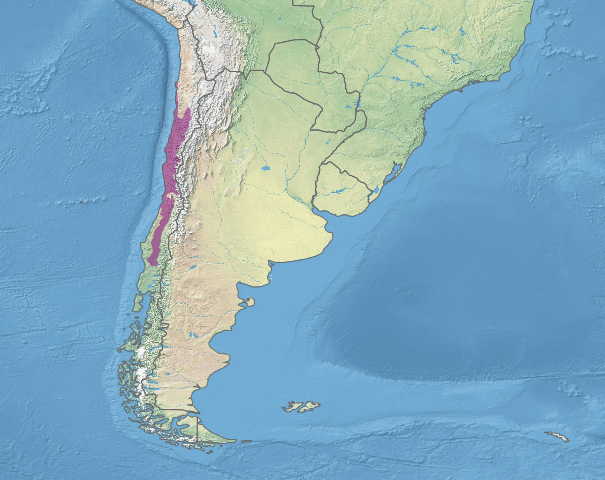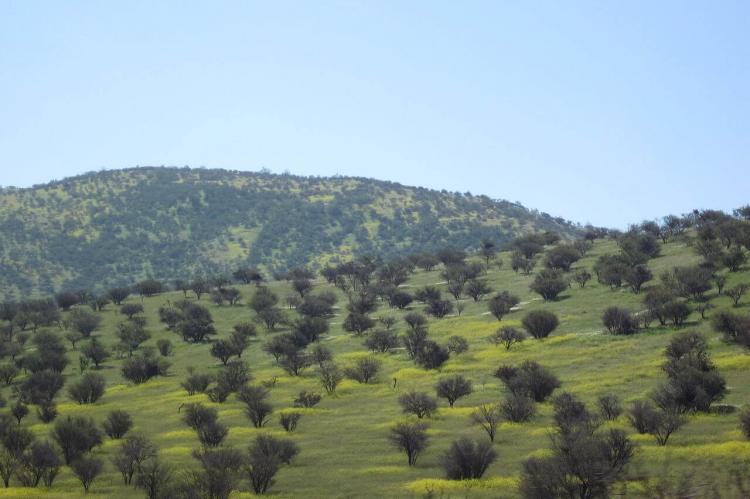The Chilean Matorral: A Mediterranean Jewel on South America's Pacific Coast
The Chilean Matorral ecoregion, nestled along the central Chilean coast, is a unique terrestrial ecosystem. It is a testament to the region's Mediterranean climate and rich biodiversity. This long, narrow strip stretching along the western coast of South America is truly a jewel in Chile's ecological crown.
The Chilean Matorral: A Mediterranean Jewel on South America's Pacific Coast
The Chilean Matorral ecoregion, nestled along the central Chilean coast, is a unique terrestrial ecosystem, a testament to the region's Mediterranean climate and rich biodiversity. This long and narrow strip, stretching for approximately 100 kilometers (62 miles) along the western coast of South America, is truly a jewel in Chile's ecological crown.
Geographical Setting
A Coastal Corridor
The Chilean Matorral ecoregion occupies a strategic position on the continent, bound to the west by the vast Pacific Ocean and to the east by the towering southern Andes mountain range. This ecoregion lies between 32° and 37° south latitude, forming a coastal corridor that embraces Chile's primary agricultural heartland.
Distinctive Landscapes
Within this ecoregion, a diverse array of landscapes unfolds. The Chilean Coastal Range runs parallel to the coastline, while the Chilean Central Valley stretches between this coastal range and the majestic Andes Mountains to the east. To the north, the Chilean Matorral transitions into the extremely arid Atacama Desert, starkly contrasting to the tropical forests further north in South America.
A Viticultural Oasis
The Chilean Matorral ecoregion encompasses Chile's primary agricultural heartland and its world-famous wine region. The Mediterranean climate, characterized by warm, dry summers and mild, rainy winters, provides ideal conditions for viticulture. The ecoregion's valleys and foothills are dotted with vineyards, producing some of Chile's most celebrated wines and contributing significantly to the country's economy and cultural heritage.
Climate and Biome
Mediterranean Influences
The Chilean Matorral ecoregion is characterized by a temperate Mediterranean climate with rainy winters and dry summers. This climatic regime is one of five Mediterranean climate regions worldwide, each located in the middle latitudes along the western coasts of continents.
A Unique Biome
The Chilean Matorral ecoregion, which falls within the Mediterranean forests, woodlands, and scrub biome, boasts a diverse array of plant communities adapted to its distinct climatic conditions and varied topography.
Flora and Fauna
Plant Communities
The Chilean Matorral ecoregion is home to several remarkable plant communities, each contributing to the region's rich biodiversity. Among these are:
- Coastal Matorral: A low, soft scrubland extending from La Serena in the north to Valparaiso in the south.
- Matorral: A shrubland community composed of shrubs, small trees, cacti, and bromeliads.
- Espinal: A savanna plant community with widely spaced clumps of trees and an understory of annual grasses.
- Sclerophyll Woodlands and Forests: Once more extensive, these now exist in small patches in the coastal ranges and Andean foothills, dominated by evergreen sclerophyll trees.
Endemic Species
The Chilean Matorral ecoregion boasts an impressive array of endemic plant species, with approximately 95% of its flora found nowhere else on Earth. These endemic species exhibit affinities to the tropics, the Antarctic, and the Andes, reflecting the region's unique biogeographic history. Notable endemic species include Gomortega keule, Pitavia punctata, Nothofagus alessandrii, and Jubaea chilensis.
Threatened Flora and Fauna
Despite its richness, the Chilean Matorral ecoregion is also home to several threatened plant species, including the endangered Adiantum gertrudis, Avellanita bustillosii, and Beilschmiedia berteroana. The region's fauna is equally diverse, with seven endemic bird species found at various altitudes, from rocky slopes to arid scrub.
Representative mammals of the region include the mouse opossum, Andean fox, puma, Chilean pudu, pichi armadillo, and the endangered Andean mountain cat. The degu, a common rodent found throughout Chile, primarily feeds on the region's shrub vegetation, while several species of lizards from the Liolaemus genus are also present.
Conservation Challenges
The Chilean Matorral ecoregion faces significant conservation challenges, as it encompasses most of Chile's population and major cities and the country's primary agricultural region in the Central Valley. Extensive grazing, logging, and urbanization have put immense pressure on the region's natural habitats, making it the least protected ecoregion in Chile in terms of national parks and preserves.
Conservation efforts focused on sustainable land management practices, habitat restoration, and establishing protected areas are crucial to preserving the Chilean Matorral's unique biodiversity and ecological integrity for future generations while ensuring the long-term sustainability of the region's vital agricultural and viticultural industries.

Map depicting the location of the Chilean Matorral (in purple).
